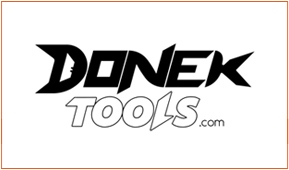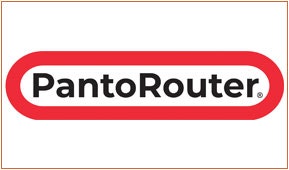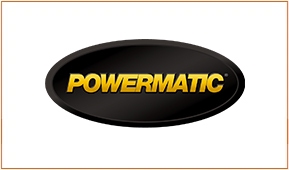How to Make Perpetual Wood Calendar, with CNC Plans | ToolsToday
© 2025 ToolsToday
Click here for complete description
I could not be happier with how this project turned out! Making a wood perpetual calendar on the Stepcraft M.1000 CNC machine using the Amana Tool 45644-K 60 degree Spektra coated v-bit, 46202-K 1/4" downcut bit, 46200-K 1/8" downcut bit, 46315-K 1/4" Spektra™ coated upcut bit and plans for this project, item no. CALENDAR, all available from our website
toolstoday.com/?utm_source=youtube&utm_medium=referral&utm_campaign=shop-cart
Download and purchase Matt's CNC plans to make the Perpetual Wood Calendar yourself,
toolstoday.com/perpetual-calendar-cnc-plans-downloadable-and-customizable.html
What do you think of how this turned out?
Feed, Speed & CNC Running Parameters
Amana Tool 46200-K SC Spektra Extreme Tool Life Coated Spiral Plunge 1/8 Dia x 1/2 CH x 1/4 SHK 2 Inch Long Down-Cut Router Bit
toolstoday.com/v-13777-46200-k.html
Feed Rate (IPM): 145
Speed (RPM): 18,000
Chip Load (Per Tooth): 0.050"
Amana Tool 45644-K SC (Brazed To Steel Shank) Spektra Extreme Tool Life Coated V-Groove 60 Deg x 3/8 D x 0.325 CH x 1/4 Inch SHK 3-Flute Router Bit
toolstoday.com/v-20136-45644-k.html
Feed Rate (IPM): 90
Speed (RPM): 18,000
Chip Load (Per Tooth): 0.0024"
Amana Tool 46202-K SC Spektra Extreme Tool Life Coated Spiral Plunge 1/4 Dia x 3/4 CH x 1/4 SHK 2-1/2 Inch Long Down-Cut Router Bit
toolstoday.com/v-13779-46202-k-bit.html
Feed Rate (IPM): 180
Speed (RPM): 18,000
Chip Load (Per Tooth): 0.050"
VIDEO TRANSCRIPTION:
This wood calendar has become one of my favorite projects. Let me show you how we made it. This is the design of the outside ring holders. There are several tool paths that are applied to these pieces that all work together to achieve a piece that requires very little finishing off the CNC machine. The plans go into detail about how I did all of that and how the tool paths are set within the vetric software I used. The text on a curve feature was utilized, and I had another circle here that was in the middle and applied the text to that curve. Be sure to check out the plans for this available on our website. Now let's head out to the shop and get this made.
For this project, I'm going to be using a vacuum table to hold everything down. With a vacuum table, there's no reference for square, so I installed a 1/4 inch pen into the collet of my CNC and ran that back and forth to make sure that this is lined up with the CNC machine.
I picked up the 60° V bit we're going to be using to carve on this piece and turned on the Black Box Storm vacuum, and this piece is going absolutely nowhere. The vacuum table is going to hold this nice and tight against there, and we'll use the 60° to go in and carve out all of the text that we're going to have on this piece. I used a 60° V bit here as we want to carve a little bit deeper with all of this fine text to make sure that we have plenty of room for paint and everything to get in. So I switched out for the 46202 –k 1/4 in down-cut bit to do all the rest of the cutting. I'll cut out the profile of the circles in two passes, and on this, I'm leaving an onion skin, which is just a little bit of material left on the bottom to make sure that everything is held in place really nicely.
After all the profiles of the rings are all cut with the smaller degree V bits, sometimes there's a little bit of fuzzies left in the corners, and I just use a nylon bristle brush to go through and remove those really quickly. I'll turn off the vacuum and get the rings pulled up, and with the onion skin, we can just pop those pieces right out the back. I absolutely love the sounds of that, but we'll move over to the router table to clean up that little bit of onion skin that's left using an 8th in radius roundover bit. This is a four flute bit and it leaves a really nice clean finish.
In this one, I accidentally went ahead and did this before painting. I would highly recommend painting first as it leaves a little bit more room for air with your painting, but we'll get to that later, and you can see what I mean.
So after that's all done, we'll move over to the workbench, get everything all blown off, and use some General Finishes milk paint. This is a thicker paint so it limits any chance for bleeding.
To remove the masking, I use a heat gun to heat it up a little bit and then a hook weeding tool to help with pulling everything off, and you can see that leaves a really, really nice clean look here and uh no bleeding or anything like that. So then the weeding tool I just used to remove all of the inside edges, and on this small piece is where you can see I left a little bit of paint on the outside edge that it wouldn't have been there if I wouldn't have rounded over first. Now those pieces are all done. Everything looks really nice. We'll just sand off that little bit of extra a little bit later.
Now we need to glue up a board for the outside ring holders. I don't have a joiner in my shop, but this gap is too big. I have a table saw. Let me show you how I fix that. Using some scrap boards, I use some double-sided tape and stick that down to each of the pieces to span between the two. I'll move the fence over to where it is just between the two pieces, then lock the fence down. We'll turn on the blade and we'll just cut through that and ensure that we get a nice clean cut on both sides. This essentially is going to adjust for any sort of misalignment with the blade or the pieces and create a kerf that when put together matches absolutely perfectly. We'll get the double-sided tape pulled off and that is a perfect glue joint.
Moving over to the workbench, I got my pieces all glued up and used some four-way panel clamps and then got it unclamped the next day. I used some Oramask on this piece as well and get that all applied. This isn't going to be for painting but it's going to prevent getting finished where we don't want it later in the process.
I'll use the same method with the quarter-inch pen to get this piece all squared up to the machine just like we did before. It's just a wider angle view so you can see exactly how I do it.
Now we can get that pen all swapped out, pick up our bit, and we're ready to begin cutting. Starting out with a quarter-inch down-cut bit to cut out a hole to test fit the pens that we're going to be using or the dowels that we're going to be using to join these pieces together. I ensure that I have a nice fit there that way we can move on with the rest of the project knowing that everything is going to work out great.
We'll cut out the ring holder slots, so this is where the rings are going to sit into. We got both pieces done. We'll cut the dowel holes again on both pieces, and then we're going to add a little round over to the edges here. Without this round over when we cut the profile that edge will chip out, so this just rounds those edges over and ensures that there is no chipping.
We'll also create another profile with the down-cut bit going below that ring holder. That way when we switch out for the up-cut bit later, we won't have any chip out. Switch out for an eighth inch downcut bit to cut out the window holes here and then we'll switch out for the quarter-inch up-cut bit to cut the rest of the profile.
I'm really impressed with the Stepcraft m1000 CNC. It definitely cut this really nicely and even switching between all of the bits there's really not much sanding left to do, and it did a really nice job.
We use the same onion skinning method here. We got both of those pieces popped out, and we can just get the windows popped out as well. Then we'll head over to the router table and get the rest of this all rounded over.
I'll use the same 8th in radius four flute round over bit that I'll round over and trim off the onion skin at the same time. This bit leaves an incredibly smooth surface, and I love seeing the amazing grain of this wood.
The windows have some skin left that needs to be trimmed away as well, and for that, I'll use a mini chamfer bit on those. The mini bits have a 3/16 in radius ball bearing that allows me to get into the corners left by the 8th in bit. Make a small pass first, and then raise the bit to cut to the final depth. This bit cuts perfectly clean even on the difficult grain here, leaving me with a nice look around the windows.
We are now ready to move on to finishing. For finish on the rings, I'm going to use some Formby's tongue oil. Just apply that on all of the pieces. I use a foam brush, and it gets into all of the carved areas as well. I'll show you how we handle that. I let that soak in for about 40 minutes and buff off the majority of the finish, and then on the inside pieces, I'll use an air compressor and blow out the finish that is inside the carved areas. It gives a different sheen to the inside. It's a little bit more shiny than the outside is, but I actually really like that. It gives a nice contrast to the piece.
So, we got that done on all of the ring holder pieces and set those aside. I let them cure for a couple of days and then came back, and you can see once it finally cures there's a slight difference in sheen in some areas. There's some really high gloss parts and others that are lower gloss. So, I'll use some quadruple zero steel wool to remove that and just buff it off for a nice hand-rubbed finish.
We'll move on to the ring holder pieces, do a little bit of light hand sanding here, and then install the dowels that we're going to use to join these. For the sanding process, this will make sure that I have everything ready to go, everything fully aligned up so that way when we apply finish to the pieces and get them glued together there's not really anything left to do. So, I applied finish to the inside using some Walrus Oil Furniture Butter, as this makes this grain look absolutely amazing.
So, we'll go through and put that finish on all of the pieces. That Oramask protects it from getting finished where we don't want it. I let that sit overnight and then buffed it off the next day, and then we can get the Oramask all pulled off, and that reveals the area that we're going to use to glue the pieces together.
Got that all done and now we can apply glue to the dowel hole locations, get that all spread around and insert our dowels. I applied a very light amount of glue to the rest of it as we don't want any squeeze out here as it's not really going to be possible to get that out of the inside of the piece, so we're using just a little bit less glue than we normally would and making sure that we have everything fully seated.
Got that all installed and we can apply clamps to get everything all clamped together and make sure that our rings can still spin here and that there's no squeeze out on any of those rings.
After the glue set up overnight, I got it unclamped and now we can turn our attention to how we're going to hang this piece on the wall. This is for my kids so I want to make sure that it doesn't really move on me so we're going to make a dovetail hanging system that's kind of like a French cleat. So, I cut the piece off at the length that I needed. I used 4 in here and then cut a 45° on the edge of each piece that way this creates a dovetail that essentially just slides between the two pieces. We'll install the two pieces on the back of the ring holder, and the dovetail piece gets installed on the wall.
So, I'll flip this over and get everything all lined up as best I can and get all of my pieces screwed in place, then that way we have a hanging solution that will hold tight against the wall and not allow it to spin as my kids use it. Just installed a little space around the back to keep it away from the wall.
I really could not be happier with the way that this project has turned out. The grain is absolutely amazing, and everything came together really, really well. All of the tools used in this video are available on our website. Be sure to check them out there. Let's give this to my daughter and let her finish off the video. Hopefully you guys enjoyed it. Have a great day everyone.
Hey, Catie
What?
I got something for you. You ready to see? Let's check it out.
Oooh What do you think?
I like it. What is it?
Today is. Today is October 16th and it's a Monday.
Sooo…October that one,
yep.
What and what
Today's Monday?
There you go.
And it's the 16th.
There you go.
Okay, are you ready to hang this at home?
Okay, let's go get it hung up at home, and then every morning before we go to school, you'll get to change it. How's that sound?
Yeah.
Tomorrow I'm going to change it to this number.
Will that be so cool?
And then this number and then this number.
There you go.
Thank you guys so much for watching. If you love this type of content, be sure to subscribe right over here and click right over here for more great videos.
Thank you all for watching!
I hope you enjoyed seeing a behind the scenes look of what goes into making and filming a project. Please let me know your thoughts, questions or comments on this down below, and be sure to subscribe to the channel so you see all of our future videos; there's a lot more to come. I look forward to seeing you guys on the next one! Have a great day!
Tools Used in Video:
- Amana Tool 46200-K SC Spektra Extreme Tool Life Coated Spiral Plunge 1/8 Dia x 1/2 CH x 1/4 SHK 2 Inch Long Down-Cut Router Bit
- Amana Tool 45644-K SC (Brazed To Steel Shank) Spektra Extreme Tool Life Coated V-Groove 60 Deg x 3/8 D x 0.325 CH x 1/4 Inch SHK 3-Flute Router Bit
- Amana Tool 46202-K SC Spektra Extreme Tool Life Coated Spiral Plunge 1/4 Dia x 3/4 CH x 1/4 SHK 2-1/2 Inch Long Down-Cut Router Bit
- STEPCRAFT M.1000 36 x 48 CNC Machine
- Vectric VCarve Pro Software for CNC
- Vectric Aspire Software for CNC














